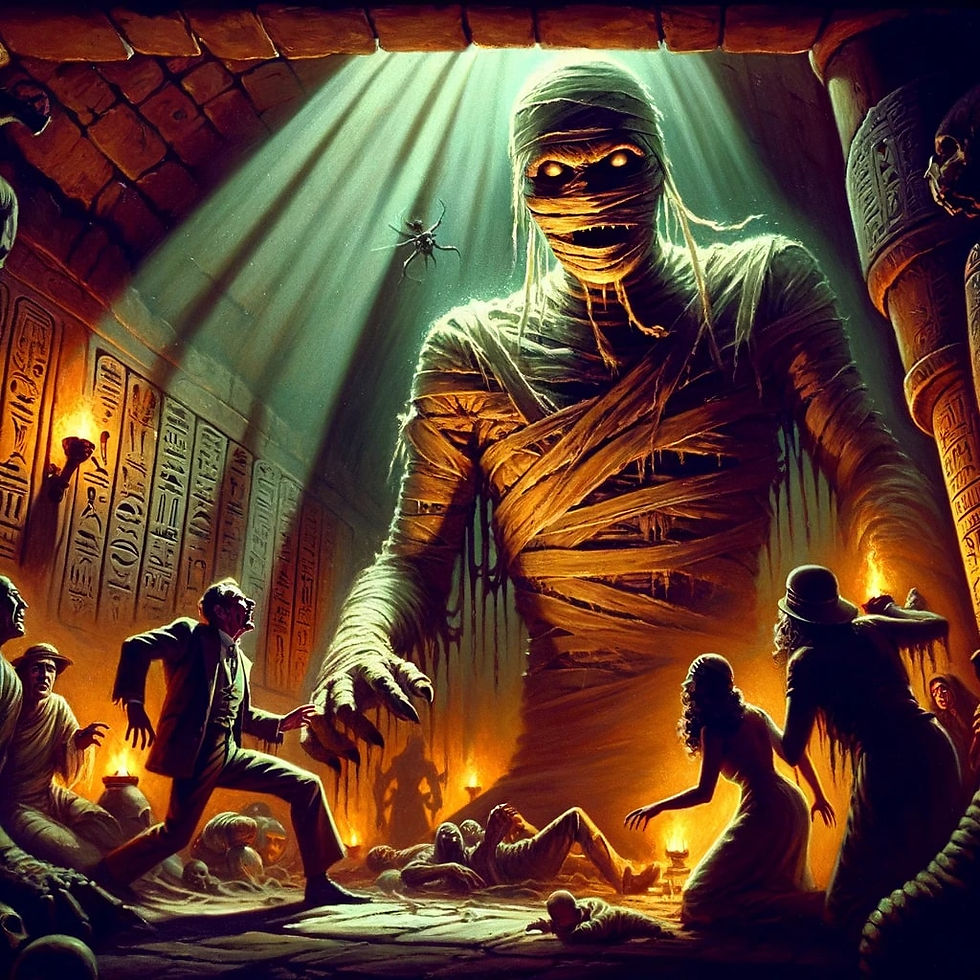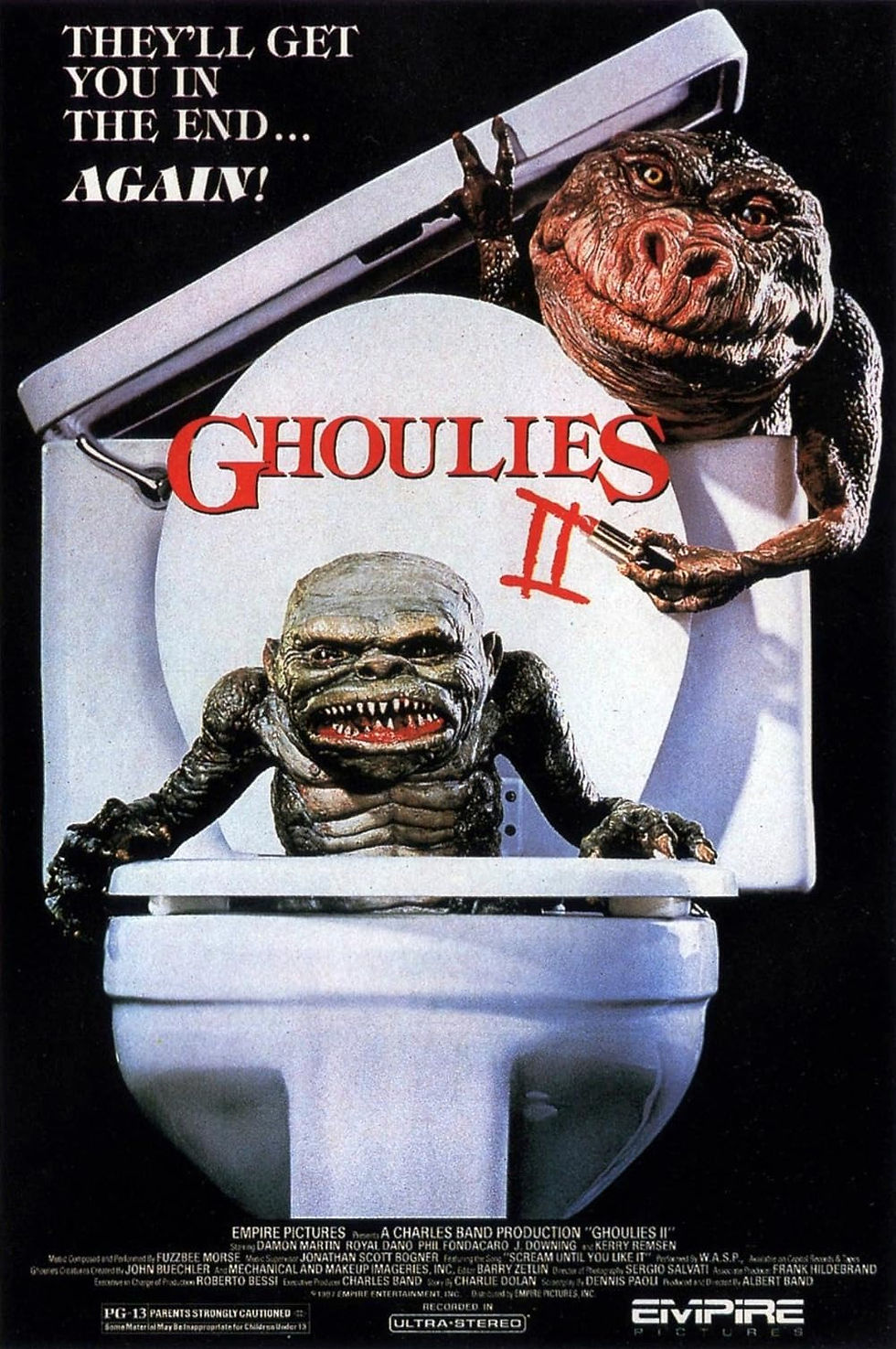Man vs. Monster: A Primal Scream Echoes Through Horror Cinema
- Allan Major

- Mar 18, 2024
- 3 min read
Updated: May 23, 2024

In the darkened theatre, the primal fear takes root. A tremor runs through the audience, a collective gasp escaping a hundred throats. On screen, a monstrous entity – a hulking behemoth, a razor-clawed nightmare – lunges towards its prey: a fragile human. This is the essence of the "Man vs. Monster" narrative, a cornerstone of horror cinema that has transfixed and terrified viewers for decades.
This battle for survival is more than just a popcorn-munching thrill ride. It's a crucible where our deepest anxieties are laid bare. The monster serves as a monstrous id, a grotesque reflection of our fears – of the unknown, of the uncontrollable, of the lurking darkness within ourselves. Yet, these films also celebrate humanity's resilience. Even when facing the most outlandish threats, we find the strength to fight back, to outsmart, and sometimes, even to find redemption.

The "Man vs. Monster" narrative boasts a rich history. The golden age of Universal Studios in the 1930s saw the birth of iconic creatures like Frankenstein's Monster and Dracula. These films explored societal anxieties of scientific progress and the blurred line between man and beast. The towering, stitched-together figure of Frankenstein's Monster wasn't just a monster; he was a cautionary tale about the dangers of scientific hubris.
As the genre evolved, so did the monsters. From the radioactive behemoth of Godzilla to the xenomorphic nightmare of Alien, science fiction and Cold War anxieties bled into the horror landscape. These creatures represented the fear of the "other," the looming threat of nuclear annihilation, and humankind's hubris in tampering with forces beyond our control.
Today's horror offers a diverse bestiary. There are the infected hordes of 28 Days Later, a chilling commentary on the fragility of civilization. Films like Hereditary explore the monstrous potential lurking within the human psyche itself. The monsters may have changed, but the core tension remains – a desperate struggle for survival against a seemingly unstoppable force.
Beyond the Fangs and Claws: Themes that Linger
The "Man vs. Monster" narrative resonates because it taps into universal themes. Here are a few that linger long after the credits roll:
Survival at all Costs: These films place characters in extraordinary circumstances, forcing them to confront their primal need to survive. Resourcefulness, quick thinking, and even a touch of ruthlessness can become essential tools.
Humanity's Resilience: Even when faced with seemingly insurmountable odds, a flicker of hope remains. The protagonists in these films embody the human spirit's ability to endure and adapt, finding strength in unity and resourcefulness.
The Nature of the Monstrous: The monster itself serves as a projection of our anxieties. Is it a force of nature, a product of scientific folly, or a reflection of the darkness within ourselves?

Who Wins? A Battle with Nuance
The line between victor and vanquished blurs in the best "Man vs. Monster" confrontations. Often, the survivors are forever changed by the horrors they've endured. John Carpenter's masterpiece, The Thing, forces us to look into the abyss of paranoia and suspicion. The Thing itself is a master of disguise, a shapeshifting monstrosity that could be hiding within anyone. As the isolated Antarctic team descends into distrust, turning on each other, the battle lines dissolve. Who is the real monster—the alien creature or the darkness it reveals lurking within the human heart?
Even if the monster is seemingly defeated, the cost of survival can be devastating. Films like Cloverfield Lane depict the lingering trauma and claustrophobic terror that follows a monstrous encounter. The threat may be gone, but the emotional scars— paranoia, shattered trust, and the unsettling knowledge of what humanity is capable of when pushed to the edge—persist. These survivors may have won the battle, but their war is far from over.
A Symphony of Screams: Why We Keep Going Back
The "Man vs. Monster" narrative continues to captivate us because it allows us to confront our fears in a safe space. We scream in the theatre, but we walk out exhilarated, perhaps a little shaken, but ultimately reassured by the knowledge that even against the most monstrous odds, the human spirit can endure.
These films are a testament to the power of storytelling. They take us on a thrilling rollercoaster ride through the darkest corners of our imaginations, reminding us of our vulnerability while celebrating our capacity for courage and resilience. So next time you find yourself drawn to the flickering image of a monstrous foe on the screen, remember, it's not just about the scares. It's about the primal scream that echoes within us all, and the enduring human spirit that continues to fight back.







